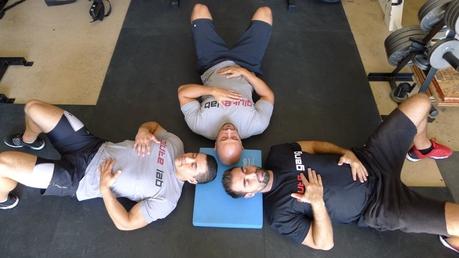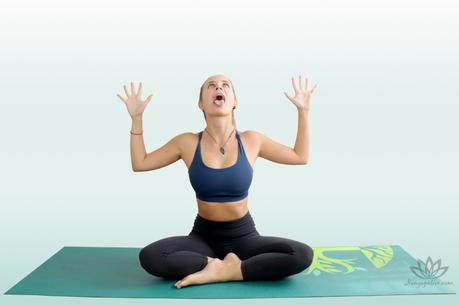These breathing exercises, when practiced daily, will greatly enhance your ability to cope with life and work. Hopefully creating a happier, healthier you!
Using Breathwork to Ease Stress and Anxiety
Most of us get stressed or suffer from anxiety in some form or another. Modern understanding points to stress as the largest culprit of our aches, pains and mental lethargy. Often, some meditation, exercise, yoga or breathwork is all it takes to boost your mood and ease the body into the day.
Breathwork refers to any exercise or practice involving conscious breath. The addition of breathwork to your lifestyle promotes mental, physical and spiritual wellbeing. Although the breath is the number one function that promotes life, we often overlook its power for healing in the midst of busy lives.
The following breathing exercises, when practiced daily, will greatly enhance your ability to cope with life and work, and hopefully create a happier, healthier you!
1. Diaphragmatic Breathing

Diaphragmatic, or belly breathing, helps to strengthen the diaphragm and increase lung capacity. It calms the mind and eases any tension in the body.
- Lie on your back with the knees slightly bent and a pillow to hold the head. You can also place a cushion under your legs for extra support.
- Place one hand on your chest, and the other on your belly.
- Inhale slowly through the nose. Try to breathe into the stomach first, then the chest. Feel your stomach press upward into your hand.
- Exhale through the mouth with a sigh, compressing first the chest and then the stomach. This creates a cycle of breathing making use of your full lung capacity.
- Continue to breathe like this, focusing on your stomach and chest. If at any point your breathing becomes strained, or shaky, stop and take a break.
You may feel tired, which is completely natural. As your capacity increases, the practice will become easier and you'll have more energy to play top games.
2. Lions Breath (Simshana)

This energizing yogic breathing practice releases tension and relaxes the face, neck and chest muscles.
3. Alternate Nostril Breathing (Nadi Shodhana Pranayama)
- Sit cross legged or in a kneeling position with your hands pressed against your knees or on the floor, fingers stretched wide.
- Inhale deeply through the nose.
- Open the mouth wide and stick out your tongue. As you breathe out, contract the throat muscles to make a "Ha" sound.
- Repeat this breath a few times.

This powerful and relaxing breath practice eases mental and emotional stress and relaxes tension in the body. Nadi Shodhana should be practiced on an empty stomach and not while congested. Keep our breath even and smooth throughout.
Take the time to try out the many different types of breathwork (not just those listed here) and find what works for you. Dedicate a few minutes at least three times a week to your practice to see the benefits.
- Find a comfortable seated position, with erect posture.
- Fold the index and middle finger of the right hand toward the palm.
- Exhale, then use the thumb to close the right nostril.
- Inhale deeply through the left nostril, then close this nostril.
- Release the right nostril and exhale fully through the right.
- Inhale deeply through the right nostril, then close this nostril
- Release the left nostril and exhale fully.
- Repeat this cycle of "exhale, inhale, switch" for five minutes, ending on an exhale through the left nostril.

